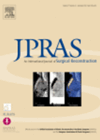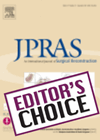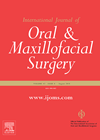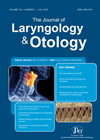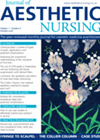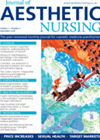
Journal Reviews archive for 2019
To use or not to use: absorbable sutures for facial wounds
This systematic literature review looked at studies comparing facial skin closure with absorable versus non-absorbable sutures. Studies not published in English, or looking at areas other than the head and neck, and studies focused on suture technique rather than material...
Facial palsy: What do patients and healthcare care about?
The article describes the process for establishing a collaborative research agenda to address gaps in understanding of the diagnosis, treatment management of facial palsy. A Delphi technique was used in order to establish a facial palsy research agenda. In round...
Plastic surgery trainees’ exposure to cosmetic surgery during training
Cosmetic surgery is an essential component of plastic surgery training and is required in order to CCT. However, the training opportunities in UK are limited. The current operative requirements for plastic surgery trainees are 100 procedures during specialist training, either...
Cycle helmets protective against facial injuries?
This is a meta-analysis completed by a maxillofacial unit on the South Coast of England. Nine studies from an initial literature review of 102 were included in the analysis. Cycling has been reported as the cause of 3-20% of facial...
Core or fine needle assessment in lymphadenopathy and salivary gland tumours
This paper from the Republic of Korea analyses 278 patients retrospectively, 112 of which underwent fine need aspiration and 166 core needle biopsies. Eleven patients had indeterminate fine needle aspiration cytology, six of whom had an additional core biopsy. The...
Maxillomandibular advancement for sleep apnoea
This is a meta-analysis compiled from India. Of the initial 103 publications 20 were analysed. Surgical cure was defined as postsurgical AHI of fewer than five events per hour. Of the 251 patients assessed for AHI, 12 where considered normal,...
The relevance of rhinoplasty and septorhinoplasty from the commissioner’s point of view
The rising costs of running the National Health Service and its overburdened resources has led to the constant monitoring of the low clinical value treatments. The operations of rhinoplasty and septorhinoplasty inevitably fall into this group and are subject to...
Chemical peels: a review of types, applications and complications
Chemical peeling agents continue to grow in popularity in response to rising patient demand. The author captures this popular treatment modality with a succinct review of some of the commonly used ingredients, classified broadly by depth into superficial, medium and...
Improving the anatomical understanding of the causation of fine lines
An interesting piece which explores the current evidence of the factors that are thought to lead to facial ageing through fine lines. The author outlines a detailed discussion of the many intrinsic factors which can lead to the emergence of...
Efficacy of radiofrequency technology in the treatment of aesthetic indications
The authors present a clear description of the mechanics of how radiofrequency (RF) was initially developed, supported by a detailed overview of some of the more common RF devices, including their mode of action and applications. The authors include a...
Sun protection is essential to prevent skin cancer and premature ageing
The author gives a brief outline of the key functions of skin with a rationale for why sun care and protection is so important, which is referenced with current guidelines relating to sun exposure and vitamin D. The risks of...
Pliability and elasticity of the external nasal skin in unilateral nasal valve collapse
The authors performed this study to test the hypothesis that the nasal skin of patients with unilateral nasal valve collapse demonstrates reduced elasticity and increased pliability on the side of the collapse compared with the nasal skin on the side...

